Motorola Droid X2 Review - A Droid X with Tegra 2
by Brian Klug on July 7, 2011 8:31 AM ESTDisplay - qHD RGBW PenTile
Probably the most significant change (other than Tegra 2) between the X and X2 is of course the display. As we mentioned before, that has been upgraded from a 4.3” FWVGA (854 x 480) IPS LCD to a qHD (960 x 540) LCD with the same diagonal size. What’s special about the X2’s screen, however, is that it comes with an RGBW PenTile subpixel rendering layout.
We’ve talked about the RGBG PenTile subpixel structure before in the context of devices which came with AMOLED or Super AMOLED displays. The chief complaint back then was that black text on webpages and UI elements didn’t always look super sharp. RGBW is a different layout with different purpose, and dare I say different results.
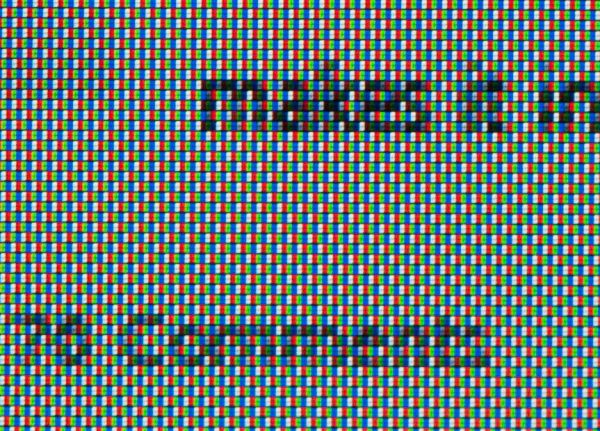
A 100% crop of the AT homepage on the Droid X2's RGBW display
As its name implies, RGBW PenTile includes a fourth, white, subpixel. The idea here is that light throughput for the panel can be vastly increased by simply adding a subpixel with no color filter. That increase in throughput then can be exploited to either get equivalent visual brightness with less backlight power, or you can crank things up all the way and get extreme brightness for the same backlight power. That translates to power savings most of the time, and extremely bright whites other times when you need it. It actually does make a lot of sense, especially when you consider things like browsing webpages which is still largely black text on a white background.
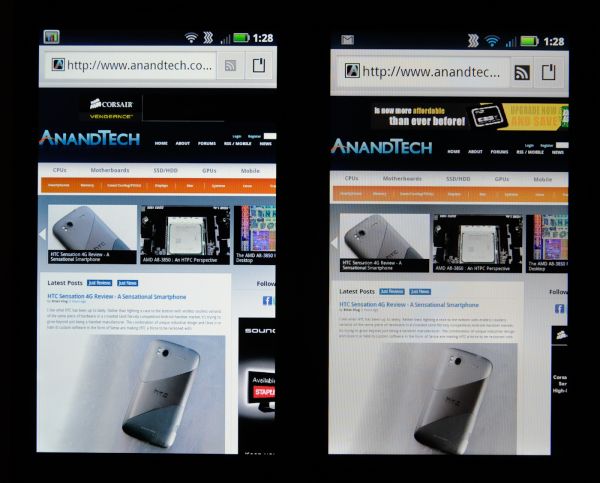 Left: Droid X2, Right: Droid X
Left: Droid X2, Right: Droid X
On webpages, RGBW actually looks pretty good, with black text being nice and sharp on a white background. This is one place where RGBG just never could do a perfect job, but RGBW does. I actually have no problem with RGBW for black text on white backgrounds.
Droid X:
Droid X2:
The only place you can still dramatically tell that this is PenTile is either by looking at regions that are solid green, or red. At green in particular, you can see a bit of that grain from the subpixel structure - green is most visible because visual acuity peaks in the green. Red is also sometimes also shows a bit of that telltale grain, but nothing too dramatic. Human visual acuity isn’t very good for blue, so that looks pretty homogeneous.
In our tests, the X2 results definitely show how much having that white subpixel can help.
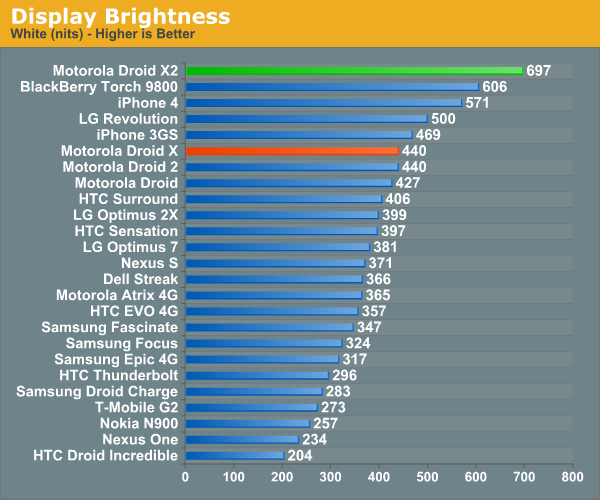

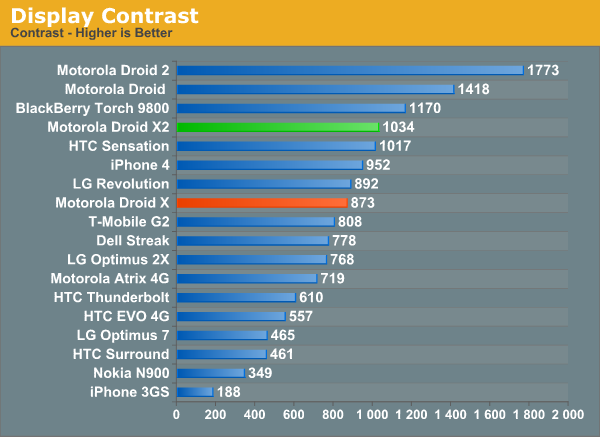
Motorola has had a pretty steady track record for putting great displays in their devices, going all the way back to the original Motorola Droid which included an IPS display. It’s nice to see that they haven’t compromised with the X2 either.
We’ve also been measuring display brightness and white point at 25% brightness increments on displays lately, and the X2 is no exception from this treatment. Alongside the Motorola Droid X, the X2 looks substantially bluer. Looking at the white point on the X2 it’s easy to see where that comes from. At 7500K it’s closer to sanity than the 8500K for Super AMOLED Plus, but still not quite perfect.

Moving onto the brightness (white and black) graph, we can see something finally reminiscent of a LCD, showing steady contrast as black and white both climb in a nice linear fashion as we ramp up brightness. The Droid X2 stays pretty contrasty, moreso than we originally measured the Droid X as being, but still not quite chart topping.
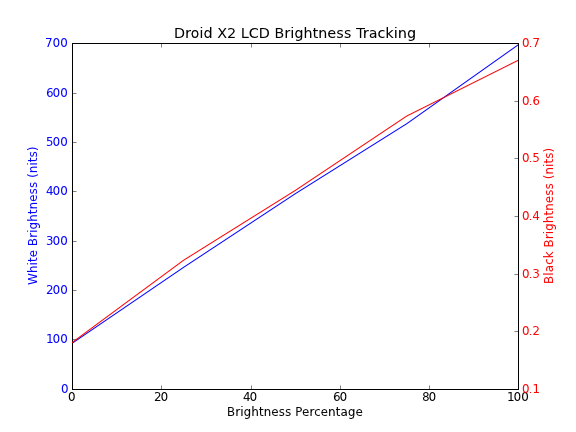
Viewing angles on the X2 seem subjectively better than the original X. You can see colors on the X fade off and turn strange at the extreme vertical angles and a bit as well at horizontal extreme angles. I don’t remember the X looking this bad, it could be that the device I borrowed has a worse panel than the original X we were sampled last year.
Outdoors the X2 seems pretty readable, no doubt thanks to having that white subpixel and extremely high brightness. Even in the extremely bright, direct Arizona sunlight the X2 seemed a bit more readable than other devices from recent memory.
Again the real nice thing about the X2 display is that qHD resolution which makes it able to both have a bit more text smoothing on webpages, and also just look better. I was especially thankful for that extra resolution when using things like remote desktop and maps from the X2, as a result, things on similarly sized WVGA displays look cartoonishly huge.


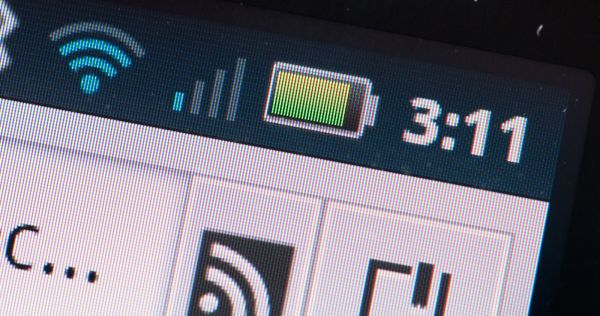
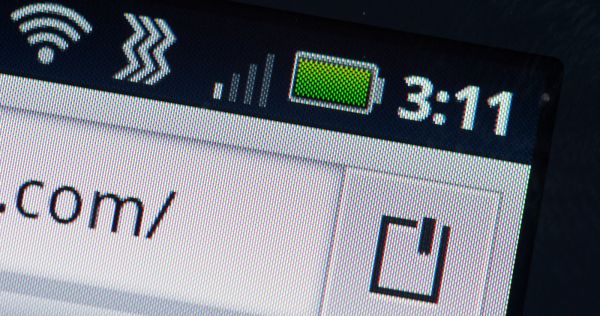






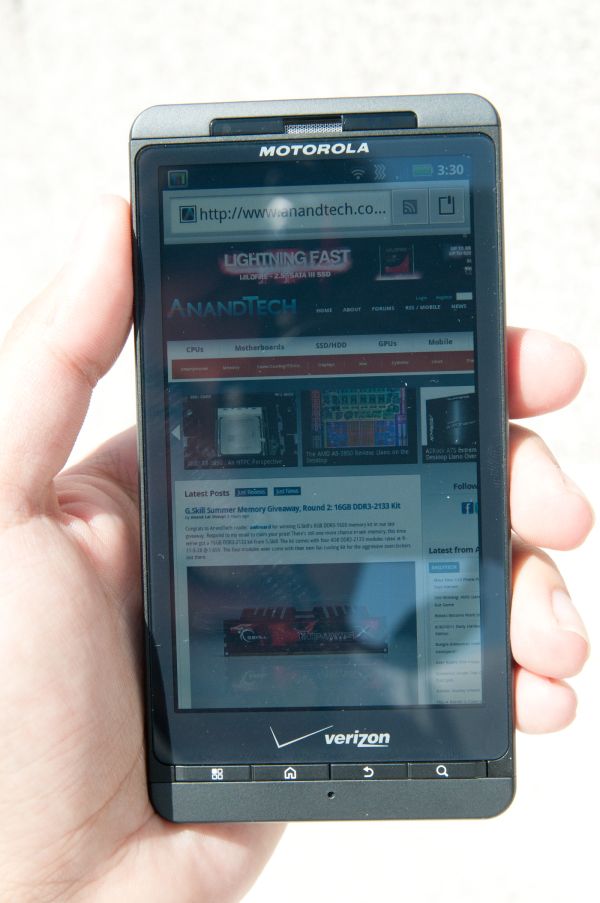








72 Comments
View All Comments
HangFire - Thursday, July 7, 2011 - link
Far be it from me to defend Apple, but this has little to do with them. The popularity of streaming media- made possible by WiFi, 3G, 4G, and pocketable 720P level resolution screens, has made phones mini media devices, and as for viewing media on screens, the bigger the better.I like a small phone, and a large TV screen. The market is in the process of discovering just what compromise people want, and don't want, in terms of size.
Anyway, the current 3.5" screen iPhone is smaller (and more phone-like) than these 4.3" mini-tablets.
jonup - Friday, July 8, 2011 - link
I was not bad talking Apple so no point to defend them. I was inferring to the fact that the iPhone revolutionalized/popularized the "mini media devices". I was just a little facetious but thats my style. ;pThat said I am left with virtually no upgrade options unless I want to spend $1000+.
strikeback03 - Thursday, July 7, 2011 - link
Did you retest the talk time for the original X? Or is your friend's X an early one? I got mine at the beginning of March, and the web browsing tests look similar to what I would expect from my phone (what do you set the screen brightness to?) but I don't think it could get anywhere near 8.9 hrs of calling. I'm used to seeing it drop 10% for 15-20 minutes of calling.jmcb - Thursday, July 7, 2011 - link
Being in a good or bad reception area will have an effect on battery life. Are you in a bad reception area?Brian Klug - Thursday, July 7, 2011 - link
I'm definitely aware of how much of a difference that can make, and we always test in moderate to good coverage areas. In this particular test area, VZW signal (both 1x and EVDO) are above -70 dBm, which is pretty good. I believe there's a screenshot or two that show -70 dBm and -65 dBm.-Brian
strikeback03 - Friday, July 8, 2011 - link
My Elixir icon shows less helpful stuff like "65%", so not sure what kind of reception in dBm I'm seeing. Though on further reading I doubt it would hit the WiFi browsing time either, with the screen on at my standard 12% brightness and all radios off I don't think it would last almost 9 hrs.strafejumper - Thursday, July 7, 2011 - link
I see the Motorola Droid 3 is up for order now on Verizon!Is the Droid 3 the next version of the phone in this review? Or a different animal?
If its the next in the same line its pretty funny that by the time a good review comes out for the phone the next one is already available to order!
Maybe with android phones if you wait for a thorough review you will be outdated before you have the phone in hand!
http://www.engadget.com/2011/07/07/motorola-droid-...
strikeback03 - Thursday, July 7, 2011 - link
It is more or less they same phone in a different form factor. Same as the Droid 2 and Droid X were closely related.strikeback03 - Thursday, July 7, 2011 - link
MY apologies, Droid 3 isn't Tegra 2, it is OMAP 4430. Brain fart. Anyway, it is still more a supplement than a replacement to the Droid X2LoneWolf15 - Friday, July 8, 2011 - link
Actually, the Droid 3 replaces the Droid 2, just as the Droid X2 replaces the Droid X.For those of us who still like tactile keyboards (like myself), the Droid 3 is the preferable phone.